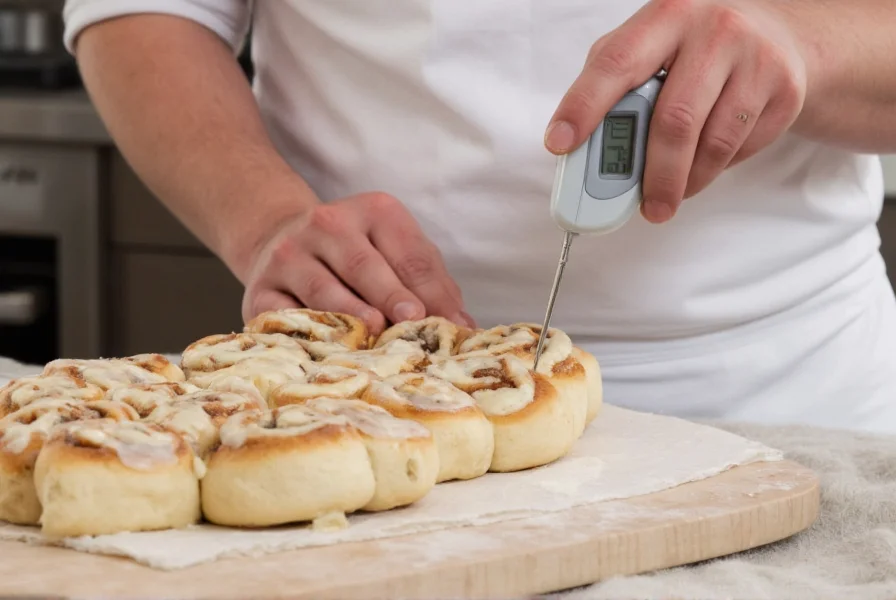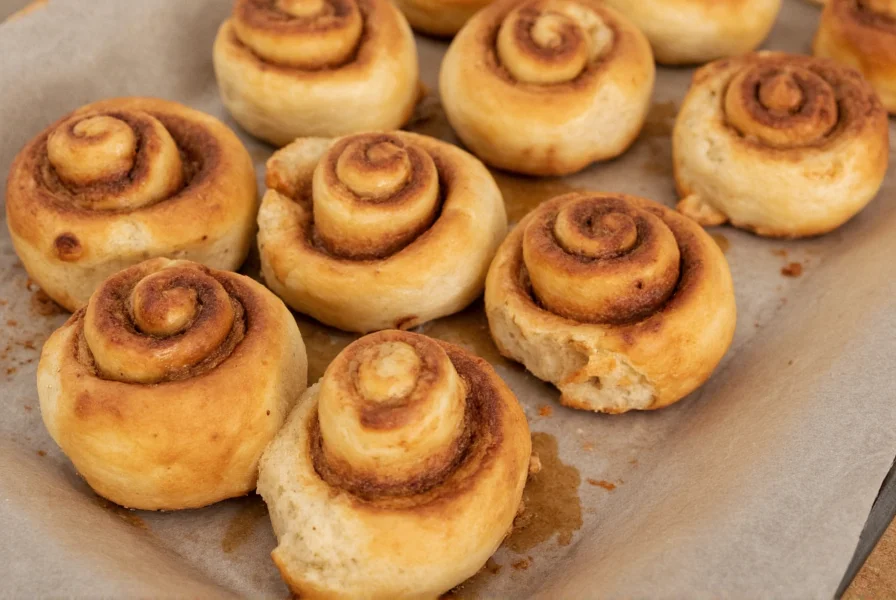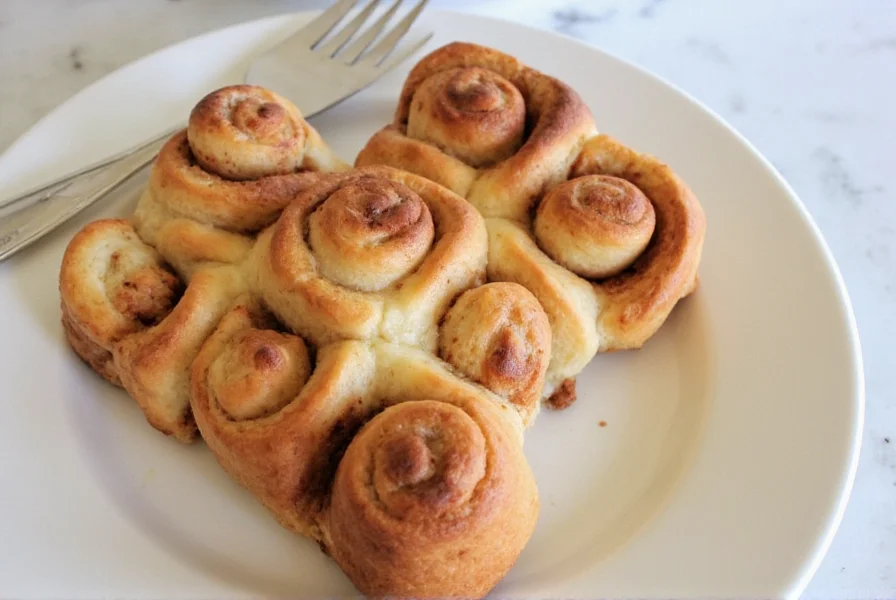When people search for 'cinnamon rolls stuff,' they're typically looking for the essential ingredients and components needed to make classic cinnamon rolls. The core elements include yeast dough (flour, sugar, milk, butter, eggs), cinnamon-sugar filling (cinnamon, brown sugar, butter), and often a cream cheese frosting. Understanding these fundamental components helps both beginner and experienced bakers create perfect homemade cinnamon rolls every time.
Making exceptional cinnamon rolls starts with understanding each component's role in the final product. While recipes vary, the essential 'cinnamon rolls stuff' falls into three main categories: dough ingredients, filling components, and optional finishing elements. Getting these right transforms a simple pastry into the beloved treat known for its spiral layers of sweet, spicy goodness.
Essential Dough Ingredients
The foundation of any great cinnamon roll is the dough. Unlike regular bread dough, cinnamon roll dough requires specific proportions to achieve that perfect balance of softness and structure. Professional bakers emphasize that ingredient quality directly impacts your final product.
| Ingredient | Function | Professional Tip |
|---|---|---|
| All-purpose flour | Provides structure | Measure by weight (120g per cup) for accuracy |
| Unsalted butter | Adds richness and tenderness | Use European-style butter (82% fat) for better flavor |
| Warm milk (110°F) | Activates yeast and adds moisture | Never exceed 115°F or yeast will die |
| Active dry yeast | Leavening agent | Proof in sugar water first to verify activity |
Dough temperature control proves critical in cinnamon roll preparation. Many home bakers don't realize that dough temperature affects yeast activity more than ingredient proportions. The ideal dough temperature after mixing should be between 75-80°F (24-27°C). Professional bakeries use temperature-controlled mixers to maintain consistency, but home bakers can achieve similar results by adjusting liquid temperatures based on room conditions.

Cinnamon-Sugar Filling Components
The filling represents the heart of what makes cinnamon rolls special. While seemingly simple, the perfect cinnamon roll filling requires attention to ingredient quality and ratios. Many commercial products use inferior ingredients that compromise flavor, but homemade versions allow complete control over quality.
High-quality ground cinnamon makes the biggest difference in flavor. Ceylon cinnamon (often called "true cinnamon") offers a more complex, less harsh flavor than the more common Cassia cinnamon. However, most professional bakers actually use a blend of both types to achieve balanced flavor notes. The sugar component should always include brown sugar for its molasses content, which creates that signature sticky, caramelized texture when baked.
Butter serves as the binding agent in the filling. Room temperature butter spreads easily without tearing the dough, while melted butter can make rolls soggy. Professional bakeries often add a small amount of corn syrup to their filling to prevent sugar crystallization during baking, ensuring that perfect gooey texture everyone loves.
Advanced Cinnamon Roll Components
Once you've mastered the basics, several advanced 'cinnamon rolls stuff' elements can elevate your results:
- Egg wash - A beaten egg with water brushed on rolls before baking creates a professional golden finish
- Overnight proofing - Refrigerating shaped rolls develops more complex flavors through slow fermentation
- Flavor infusions - Adding orange zest to dough or bourbon to filling creates sophisticated variations
- Texture enhancers - Chopped pecans or walnuts add crunch that contrasts beautifully with soft dough
Temperature management remains crucial during the filling process. Many home bakers ruin their rolls by working with dough that's too cold (causing tearing) or too warm (making butter melt prematurely). The ideal dough temperature for rolling and filling sits between 70-75°F (21-24°C).
Avoiding Common Cinnamon Roll Mistakes
Understanding what not to do proves just as important as knowing the right techniques. Based on professional bakery experience, these mistakes most frequently ruin otherwise promising cinnamon rolls:
- Over-flouring the work surface - Excess flour makes dough tough and prevents proper rising
- Using melted butter in filling - Causes sugar to sink and creates uneven distribution
- Rolling too tightly - Compresses dough and prevents proper expansion during baking
- Under-proofing before baking - Results in dense, chewy texture instead of light, airy rolls
- Overbaking by even 2 minutes - Dries out the delicate dough structure permanently
Professional bakeries solve the proofing challenge by using temperature and humidity-controlled proofing boxes. At home, creating a warm, draft-free environment (like an oven with just the light on) yields significantly better results than countertop proofing in most kitchens.

Storage and Reheating Techniques
Proper handling of finished cinnamon rolls preserves their quality. Many people don't realize that the components continue to interact even after baking. The sugar filling naturally migrates toward the bottom of stored rolls, which explains why day-old rolls often have soggy bottoms.
For optimal freshness, store unfrosted rolls in an airtight container with parchment between layers. Add frosting just before serving. If you must store frosted rolls, use a paper towel under the container lid to absorb excess moisture. Freezing works exceptionally well for cinnamon rolls - wrap individual rolls tightly in plastic wrap, then place in freezer bags. They'll keep for up to three months and can be reheated directly from frozen.
When reheating, professional bakeries use a two-step process: first warming rolls gently at 250°F (120°C) until center reaches 140°F (60°C), then finishing with a brief 30-second blast at 350°F (175°C) to refresh the crust. This technique preserves moisture while restoring that fresh-baked texture.
Frequently Asked Questions
What's the difference between cinnamon roll dough and regular bread dough?
Cinnamon roll dough contains significantly more sugar and fat than standard bread dough. The higher sugar content feeds the yeast more aggressively while creating that characteristic soft, cake-like texture. Most cinnamon roll recipes include 1/4 to 1/2 cup more sugar and double the butter of comparable bread recipes, which affects both flavor and structure.
Can I make cinnamon rolls without yeast?
Yes, but they won't be traditional cinnamon rolls. Yeast creates the distinctive airy texture through fermentation. Quick versions using baking powder or soda produce more biscuit-like results often called 'cinnamon biscuits.' These lack the complex flavor development from yeast fermentation but work well for last-minute cravings.
Why do my cinnamon rolls tear when I roll them up?
This usually happens because the dough is too cold or over-floured. Properly conditioned dough should be slightly tacky but not sticky. If your dough tears, let it rest covered for 10-15 minutes to relax the gluten before attempting to roll again. Professional bakers always allow a 'bench rest' period after rolling dough to its final thickness.
What's the secret to getting perfect spiral layers in cinnamon rolls?
The key factors are consistent dough thickness (about 1/4 inch), even filling distribution, and rolling with moderate tension. Start rolling from the long edge, using your fingertips to gently guide the roll without compressing it. Professional bakeries use a bench scraper to help lift the leading edge while rolling, creating cleaner spirals with better layer definition.
How can I prevent my cinnamon roll filling from leaking out during baking?
Three techniques prevent filling leakage: 1) Use room temperature (not melted) butter in your filling 2) Leave a 1/2 inch border along the far edge when spreading filling to seal the roll properly 3) Pinch the seam gently but firmly after rolling. Professional bakeries also recommend chilling shaped rolls for 15 minutes before baking, which helps the butter solidify and reduces leakage.











 浙公网安备
33010002000092号
浙公网安备
33010002000092号 浙B2-20120091-4
浙B2-20120091-4